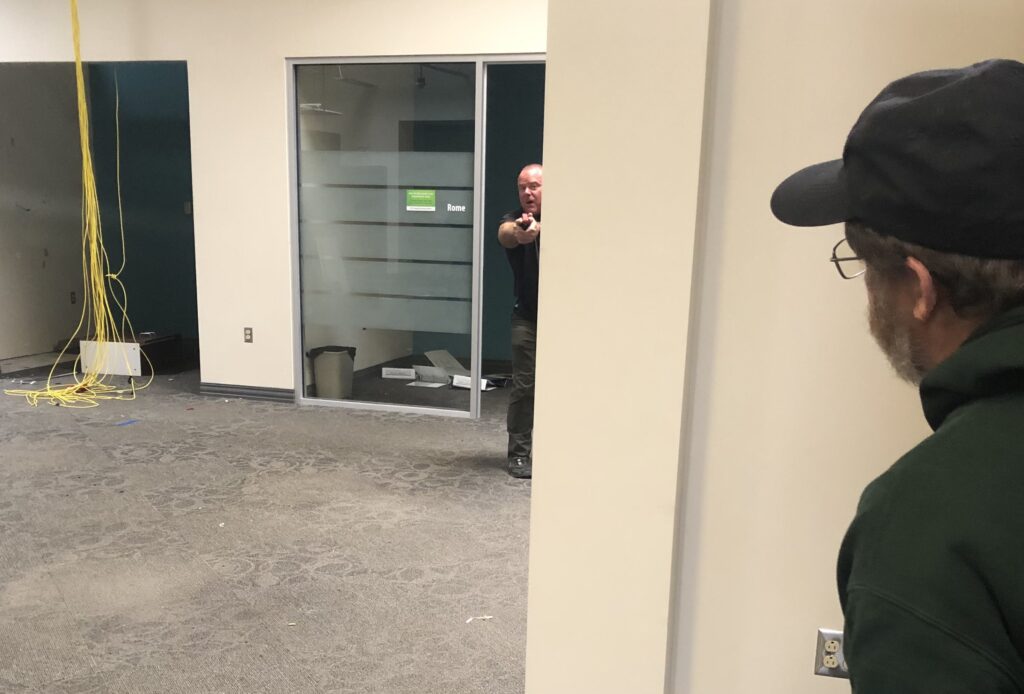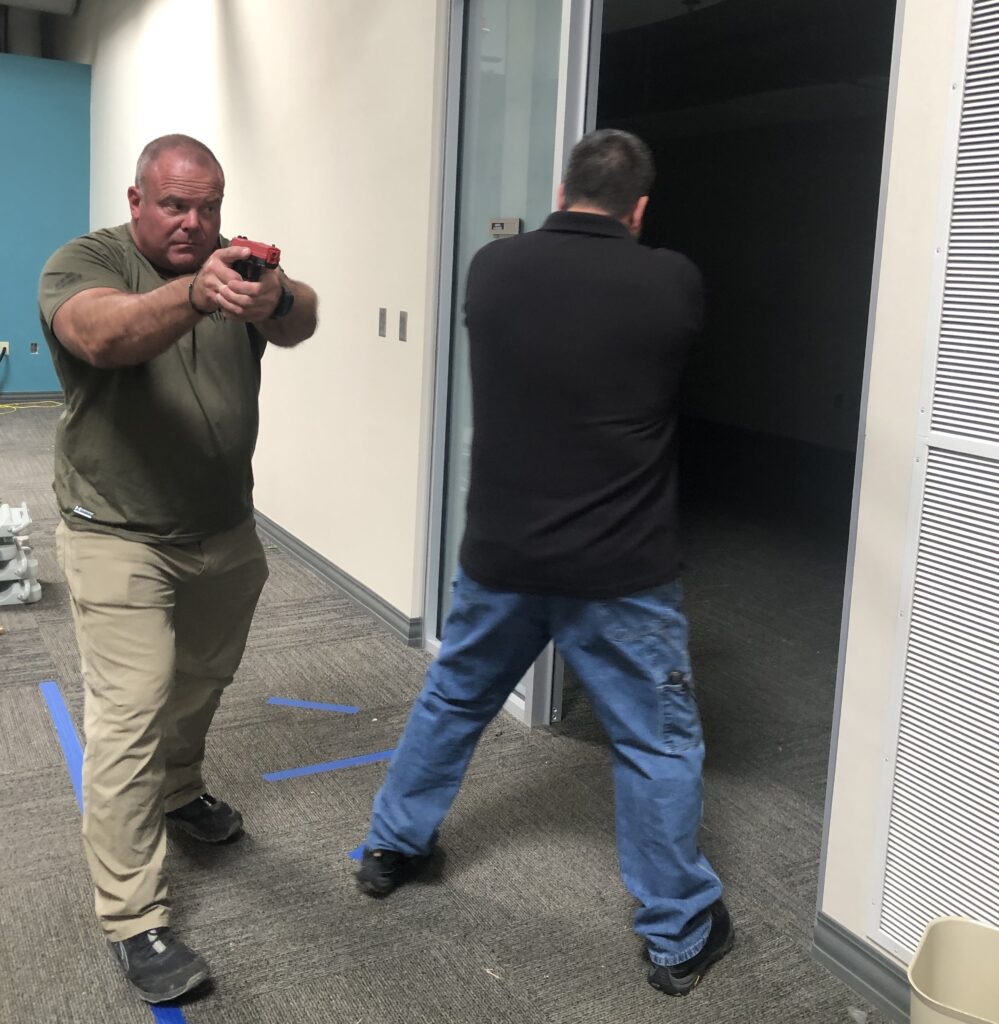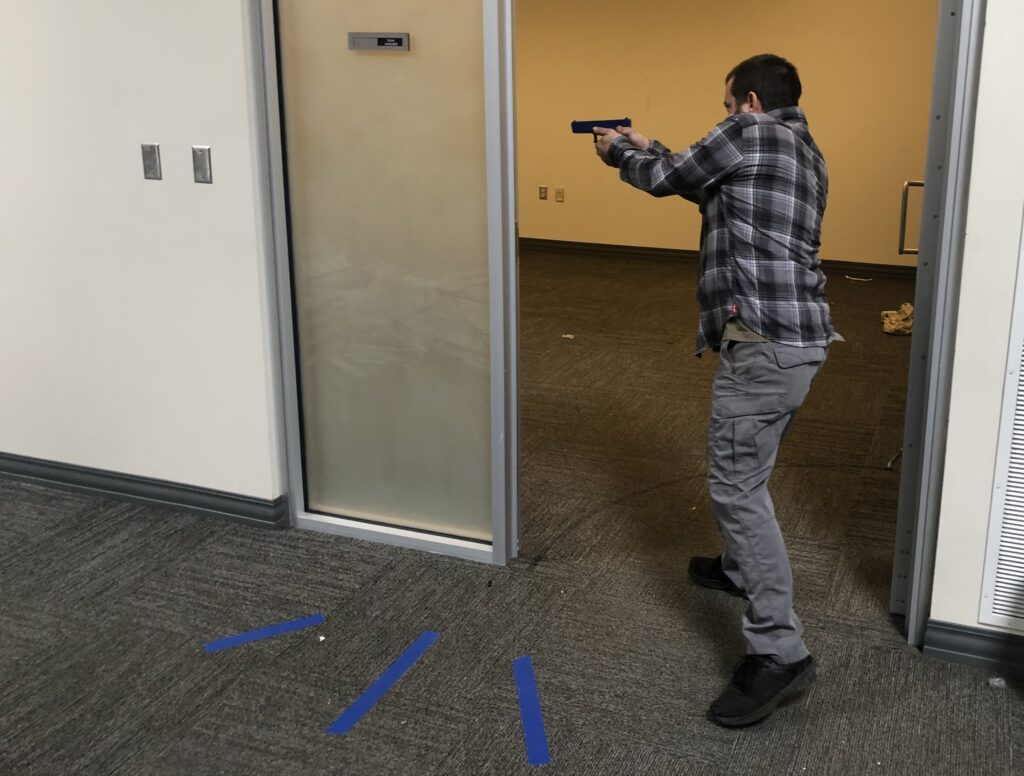Have you ever heard cops or military folks talk about how bad structure clearing sucks? Did you wonder why they were complaining so much about something that looks pretty straightforward on TV or in movies?
I spent a couple days learning the ins and outs of structure clearing, and let me tell you, as bad as you may think they have made it sound, it is so much worse than that.
Let me tell you why.
The Rundown
Imagine having free run of an all-but-abandoned office building, with 12 other people, and one of the top instructors in the country to drill structure clearing principals and work force-on-force exercises.
Sounds pretty cool, right?
First, yes. It was very cool. But it also sucked. A lot.
I like learning new things. Mainly I like learning new things because I like getting better at them. I like being a student and making connections between different principles and disciplines to deepen my understanding of things and make connections not everyone makes.

The main thing I learned was simple. Structure clearing sucks.
Here’s the three biggest reasons why.
The Odds are Against You
I like to stack the deck in my favor whenever possible. Situations awareness, marksmanship, stress management, these are things I can work on to try to be better than my attacker.
That one big bugaboo of defensive firearm use, however, is that it’s defensive. We can’t proactively decide to draw down on someone we think is sketchy until they’ve made the first move to escalate the situation.
When it comes to clearing a structure, this dilemma goes to another level. The person you are going to encounter isn’t on the street, they’re lying in wait. If you want to find them, you have to go in after them.
You don’t know where they are, but they know exactly where you will be coming from.
Are there ways to mitigate this? Can you slice the pie, and work your angles, and make smart use of cover and concealment? Sure, you can do all of those things.
You can do all of those things, and do them perfectly, and still have a very good chance of getting dead.
Twice the Stress – None of the Fun
There are two ways to use structure clearing principles. The first is to get out of a structure with threats inside. The second is to enter a structure to remove a threat.
In almost every instance, the right answer is “don’t clear that structure.” Get away. Call the cops. Let them deal with it. They get paid for that kind of thing.
Unless you’re caught inside with a threat, or you are concerned that a loved one is trapped inside with a threat. In those instances, you may well decide that you can’t wait for the police to arrive. You may be forced to take action.
Talk to any of the professionals about this sort of thing and they’ll tell you that a good many folks can handle the adrenaline dump of themselves being in a bad situation. When action is forced because of danger to a loved one, however, the math changes. There are other considerations, and that can be more than many non-sworn can handle.

You’re taking what is already a terrible situation, and you make it worse.
If you absolutely, positively can’t avoid going in, get your mind as right as you can.
Hopefully the first time you have to clear your house, is the first time you’ve cleared your house.
Structure Clearing is Unfamiliar Territory
Responsible defensive firearm use largely focuses on threat avoidance. Should we be unable to avoid the fight, the goal is to win it as quickly as possible. While that part of the defensive firearm use gets all the attention with drills and training and skill development, the lion’s share is in knowing when something doesn’t look or feel right.
The best fight is the one you avoid.
When you clear a structure, you’re walking INTO the fight.
You’re walking into a fight with the odds not in your favor, and hyper-stressed.
That’s an 0-2 count, folks.
Most of us don’t go the range as often as we should. We don’t dry fire like we should. Even those of us who do it more often than most, aren’t doing it as often as we should.
We damn sure aren’t working angles and practicing structure clearing as often as we should. We aren’t doing force-on-force structure clearing as often as we should. The situations we are walking into is one we are not nearly as prepared for as we should be.
How are you going to handle a t-intersection? Can you work your stairs without exposing yourself?

Avoid Structure Clearing
Going into a structure is an absolute last resort. You aren’t doing this to save a TV or some jewelry. This is only something you embark upon to save your life or the life of someone you love.
I didn’t think working and drilling this stuff would be easy, but after two days of doing it, my eyes were opened to just how miserable an assignment it can be. I’ve seen someone do everything right and still end up taking fire that would have likely killed them. I’ve worked a room “right” and still not won the day.
I learned a lot of things about clearing structures, how to drill it to get better, and how to make my house easier to clear.
But the main thing I learned is that clearing structures absolutely sucks and that I don’t want to ever have to do it.